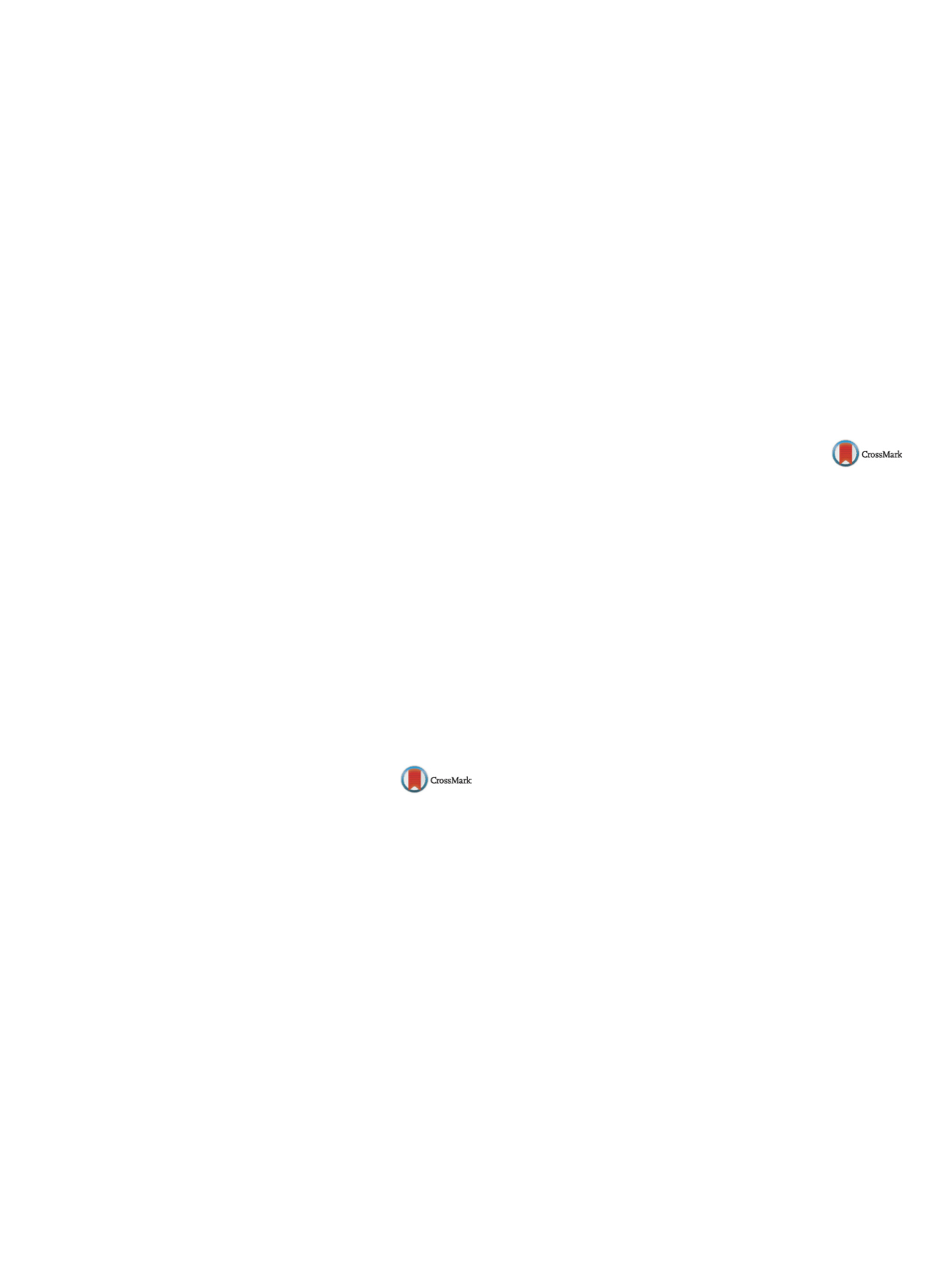

25th European Congress of Psychiatry / European Psychiatry 41S (2017) S847–S910
S879
4
Hospital Dr. Josef Babinski Krakow, Psychiatry, Krakow, Poland
5
Katedra Psychiatrii, Uniwersytet Jegiellonski, Collegium Medicum,
Psychiatry, Krakow, Poland
6
Constantine the Philosopher University in Nitra, Psychology, NItra,
Slovak Republic
7
Department of Psychiatry, Faculty of Medicine and Dentistry,
University Palacky Olomouc, University Hospital, Psychiatry,
Olomouc, Czech Republic
∗
Corresponding author.
Introduction
Alcohol dependence is a serious problem in Central
Europe and the treatment effect depends on level of patient’s moti-
vation. The theory of change assumes that therapeutic approaches
should be adapted to the motivation stage.
Objectives
To examine the state of readiness to change at the
beginning and the end of inpatient 6-week and 12-week therapeu-
tic program in Slovakia, Poland, and Czechia.
Aim
To compare readiness to change with insight and motiva-
tion. To find out, whether patients change during the therapeutic
program and how this change leads to advances in treatment.
Methods
A total of 380 inpatients were examined using Alco-
hol Use Disorders Identification Test (AUDIT), the Stages of Change
Readiness and Treatment Eagerness Scale (SOCRATES), Readiness
to Change Questionnaire (RCQ), and Demographic Questionnaire.
Results
Measured by AUDIT, single patients declared higher
severity of alcohol dependence than married or divorced patients.
A majority of patients were at the stage of action (68.5%) or prepa-
ration (26.3%) according to RCQ at the beginning of the treatment.
Readiness to change was higher at the end of both programs in
terms of taking steps in married patients and in terms of Decreas-
ing of Ambivalence in single patients. The results of the 6-week
program appear to be slightly better than 12-week treatment.
Conclusions
The intention and motivation to treatment changed
during therapy. Marital status may increase the active component
for readiness to change, while passive component (decreasing the
ambivalence) is observed in single patients. Duration of the pro-
gram does not seem to be crucial for readiness to change.
Disclosure of interest
The authors have not supplied their decla-
ration of competing interest.
http://dx.doi.org/10.1016/j.eurpsy.2017.01.1773EV1444
The prevalence of psychiatric
co-morbidities and relapses in males
treated for alcohol dependence
syndrome – Prospective study from
tertiary de-addiction care unit in
Kerala, India
S. Soman
∗
, A. Vr
Mental Health Centre, Psychiatry, Thiruvananthapuram, India
∗
Corresponding author.
Kerala has high percapita consumption of alcohol among the other
Indian states.
Objectives
Prevalence of psychiatric co-morbidities in alcohol
dependence syndrome and association of severity of alcohol
dependence, personality dimensions, motivation and short delay
relapses.
Methods
A prospective study in 91 male alcoholic patients for
2months.
Results
Two groups not relapsed (NR = 48) and Relapsed (R = 43)
were comparable in age, SADQ severity score, average units of alco-
hol consumption and years of alcohol use. Average consumption
was 17 units/day (500mL spirits), age of onset before 25 years 87%,
mean age 40 and severe alcohol dependence was in 57% of study
population. Co-morbid nicotine use was 80.2% and in equal num-
bers in the relapsers and non-relapsers group.
Conclusions
Bipolar disorder was the most prevalent (19.8%) in
the study population. About 53.8% had alcohol dependence as the
primary diagnosis with no associated psychiatric co-morbidities.
Anxiety disorders (12%) and personality disorders (19.7%) were
found more in the relapsers group. Anxiety symptoms seemed to
be a risk factor for relapsing compared to other co-morbidities
in bivariate analysis (Pearson Chi
2
5.998,
P
= 0.014). Psychoticism
among relapsers were high (Pearson Chi
2
4.901,
P
value 0.027,
OR
:
3.782, 95%
CI
: 1.103–12.958). Co-morbidities were not statistically
significant in multivariate (Pearson Chi
2
1.765,
P
= 0.184,
OR
: 1.755,
95%
CI
: 0.763–4.037). Severity of alcohol dependence in relapsers
was not significant (Pearson Chi
2
0.650,
P
= 0.722). Motivation lev-
els of 62.8% of relapsers were low, 32.6% medium and only 4.7%
reported high motivation (Pearson Chi
2
11.846,
P
= 0.003). Poor
motivation proved to be a risk factor for future relapse (
P
= 0.008,
95%
CI
: 1.266–4.648, SE.332).
Disclosure of interest
The authors have not supplied their decla-
ration of competing interest.
http://dx.doi.org/10.1016/j.eurpsy.2017.01.1774EV1445
Anti-craving biofeedback program in
clinical course of pathological
addictions
I. Sosin
1 ,∗
, Y. Chuev
2, A. Volkov
2, O. Goncharova
21
Kharkov Medical Academy of Postgraduate Education, Narcology,
Kharkov, Ukraine
2
Kharkiv Medical Academy of Postgraduate Education, Narcology,
Kharkiv, Ukraine
∗
Corresponding author.
Introduction
Modern clinical narcology searches for anti-craving
programs to overcome psychoactive substances (PAS) pathological
addiction with bio-adaptive regulation of systems (BARS).
Aims and objectives
To develop computer modified biofeedback
program integrated with Luscher test.
Method
Twenty-two PAS addicts who were undergoing biofeed-
back modified psycho-training were examined. Computer rheoen-
cephalogram (REG) was used as an external monitoring module.
Results
Technologically novel biofeedback computer modifica-
tion was developed with preceding Luscher computer testing for
determination of the individual preference colour and the colour
producing individual unpleasant associations in respondents. Con-
sequently, biofeedback program was corrected differentially by
changing standard colour templates for those personified on
monitor. Cerebral hemodynamics condition transferred to indi-
vidually designed for a particular respondent colour registers is
used as a homeostatic parameter reflecting alcohol craving pres-
ence/absence: in case of the disordered REG parameters the signal
reflects the respondent’s unpleasant (negative) colour, and with
no craving the screen is filled with positive, pleasant, favourite
colour. During BARS auto-training the respondents’ skills to medi-
ate present subjective clinical PAS craving manifestations with
unpleasant colour and the experimental auto-trainingmethodhave
been mastered, and those psycho emotional states which displace
PAS craving symbolic colour from the screen are selected, and it is
substituted with favourite colour (symbol of healthy mode of life
motivations).
Conclusions
Usage of combined BARS biofeedback improved
effectiveness of the training and allowed to objectivize and con-
trol the condition of the patient getting reliable visual and digital
information about either regress or activation of PAS craving and
potential relapse of addictive behaviour.
Disclosure of interest
The authors have not supplied their decla-
ration of competing interest.
http://dx.doi.org/10.1016/j.eurpsy.2017.01.1775

















